Planning policy - section 3F: research
Report commissioned to help develop a Scotland wide Section 3F planning policy, by proposing reasonable levels of CO2 (Carbon dioxide) emissions reduction that can be expected from use of low and zero carbon generating technologies (LZCGTs) in new buildings.
Appendix B: Scenario Development
Scenario Graphs & Summary Tables
The following graphs and summary tables were used to determine what would be an appropriate LZCGT contribution to the energy demand in new domestic buildings under different CO2 emission reduction standards. The data represented here is the predicted energy demand for dwellings ranging in size from 25m2 to 300m2 under three different fabric energy efficiency standards. It was generated as described in the main report using formula prescribed in the Standard Assessment Procedure SAP 2012 (BRE, 2014).
The three modelled scenarios were developed to represent a level of fabric energy efficiency that might be reasonably expected and achievable by a moderate sized dwelling built under the Scottish Building Standards (Table: B.1). These scenarios were developed to provide a better understanding of how changes to the fabric energy efficiency context impact on overall annual energy consumption and the size of LZCGT installations that would be required to meet proposed contribution targets. The annual space heat demands used to represent these fabric energy efficiency scenarios are 45kWh/m2.annum, 30kWh/m2.annum and 15kWh/m2.annum respectively.
These scenarios can be viewed as representing past (2012), present (2020 - 2021) and future (2024 -2050) fabric energy efficiency contexts, and thus allow a more accurate model of how tightening CO2 emission reduction standards may impact on the contribution and cost-effectiveness of LZCGT. Alternatively, they may be viewed sociologically in terms of diffusion theory as representing: laggards and the late majority; the early majority; and early adopter and innovators respectively (Gladwell, 2000). The impact of not improving fabric energy efficiency on the size and capacity of LZCGT installations needed to meet contribution targets can be clearly seen by comparing the same graphs from different scenarios.
| Scenario 1: | 45kWh/m2.annum | Past | 2012 | Laggards & Late Majority |
|---|---|---|---|---|
| Scenario 2: | 30kWh/m2.annum | Present / Near Future | 2020-2021 | Early Majority |
| Scenario 3: | 15kWh/m2.annum | Future | 2024-2050 | Early Adopters & Innovators |
Interpreting the Graphs
For help understanding how the graphs can be used to evaluate whether potential LZCGT options will meet a specific emission reduction targets see Figure B.1 below.
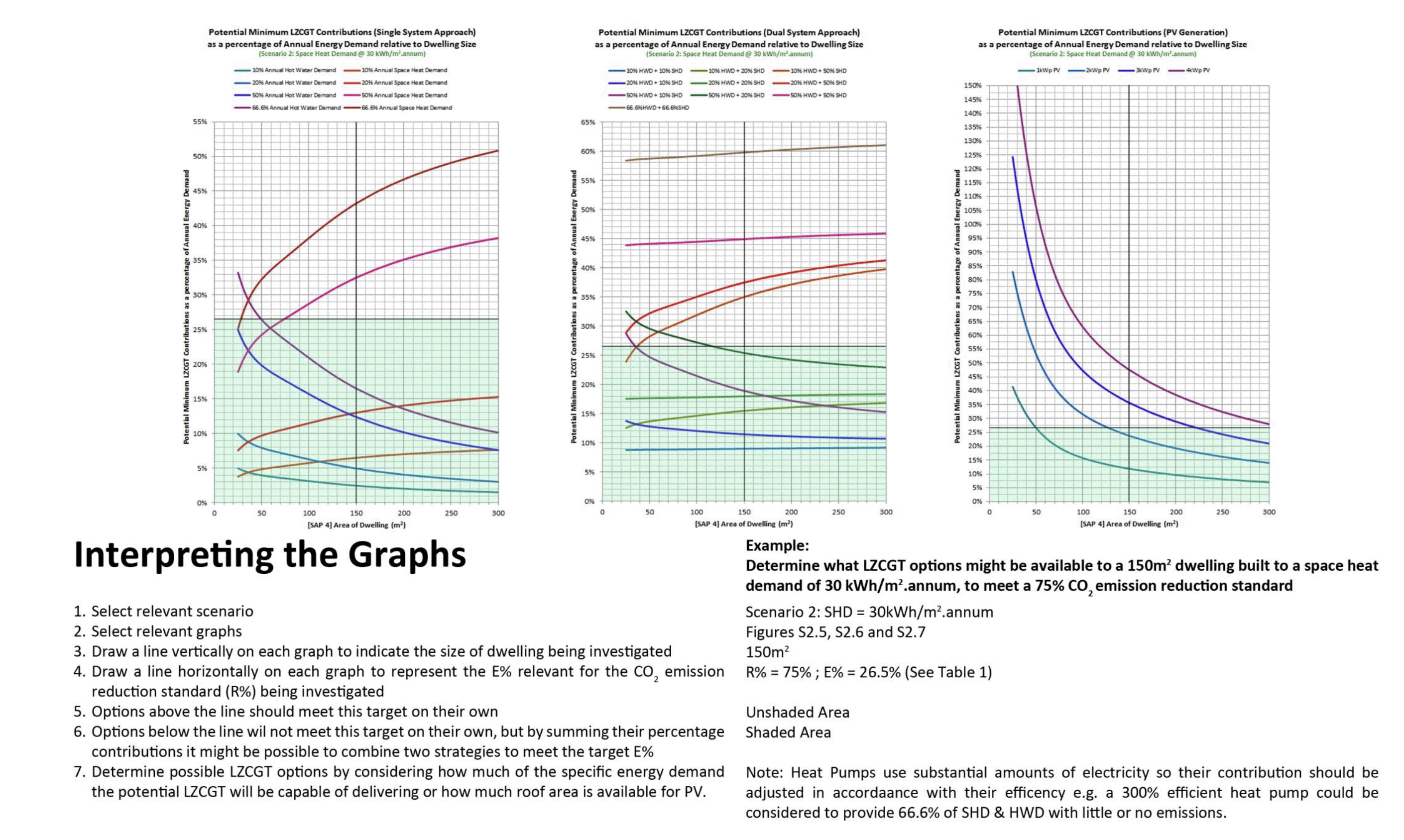
Scenario 1: Past (2012)
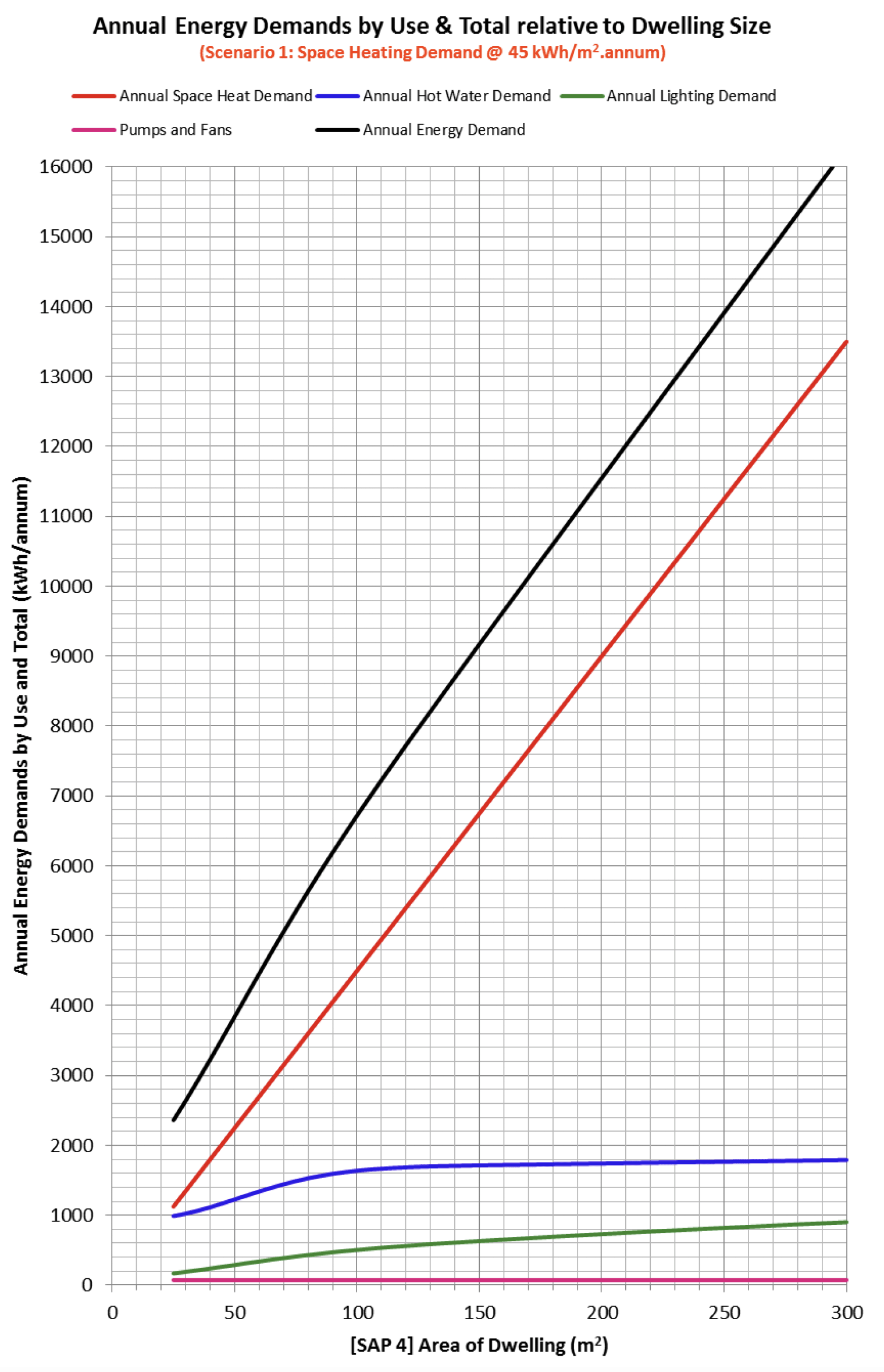
Scenario 1: Past (2012)
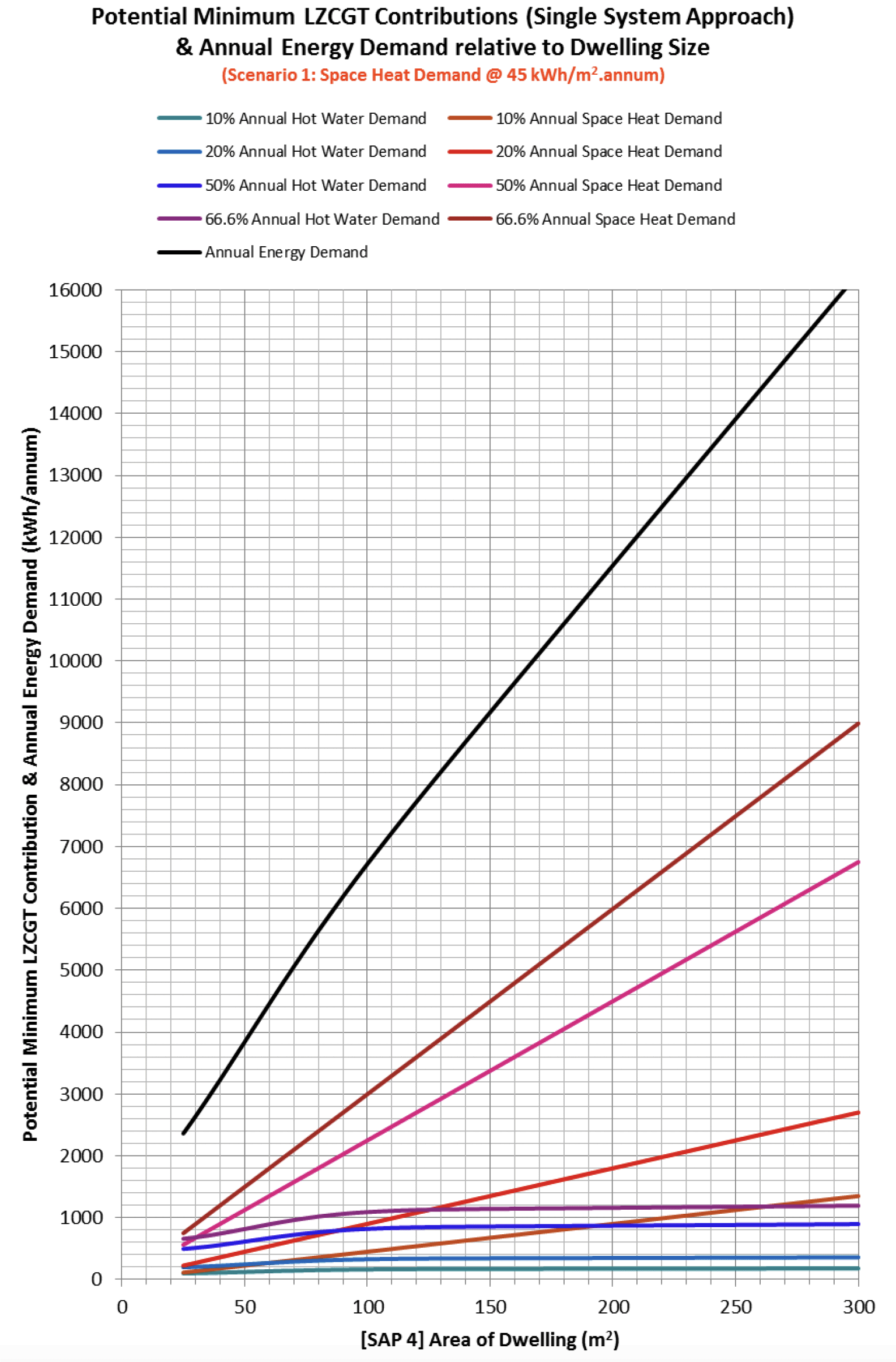
Scenario 1: Past (2012)
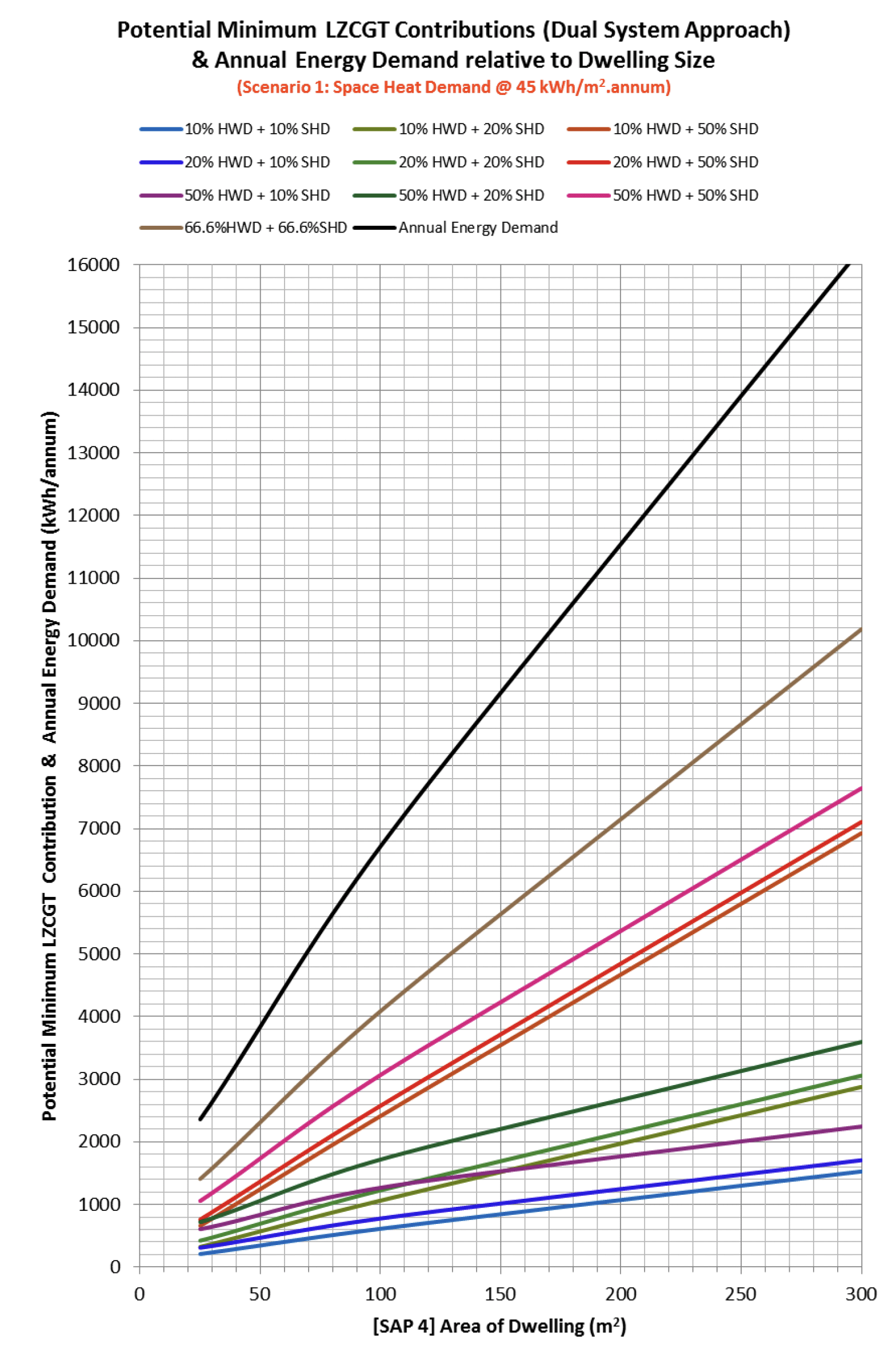
Scenario 1: Past (2012)
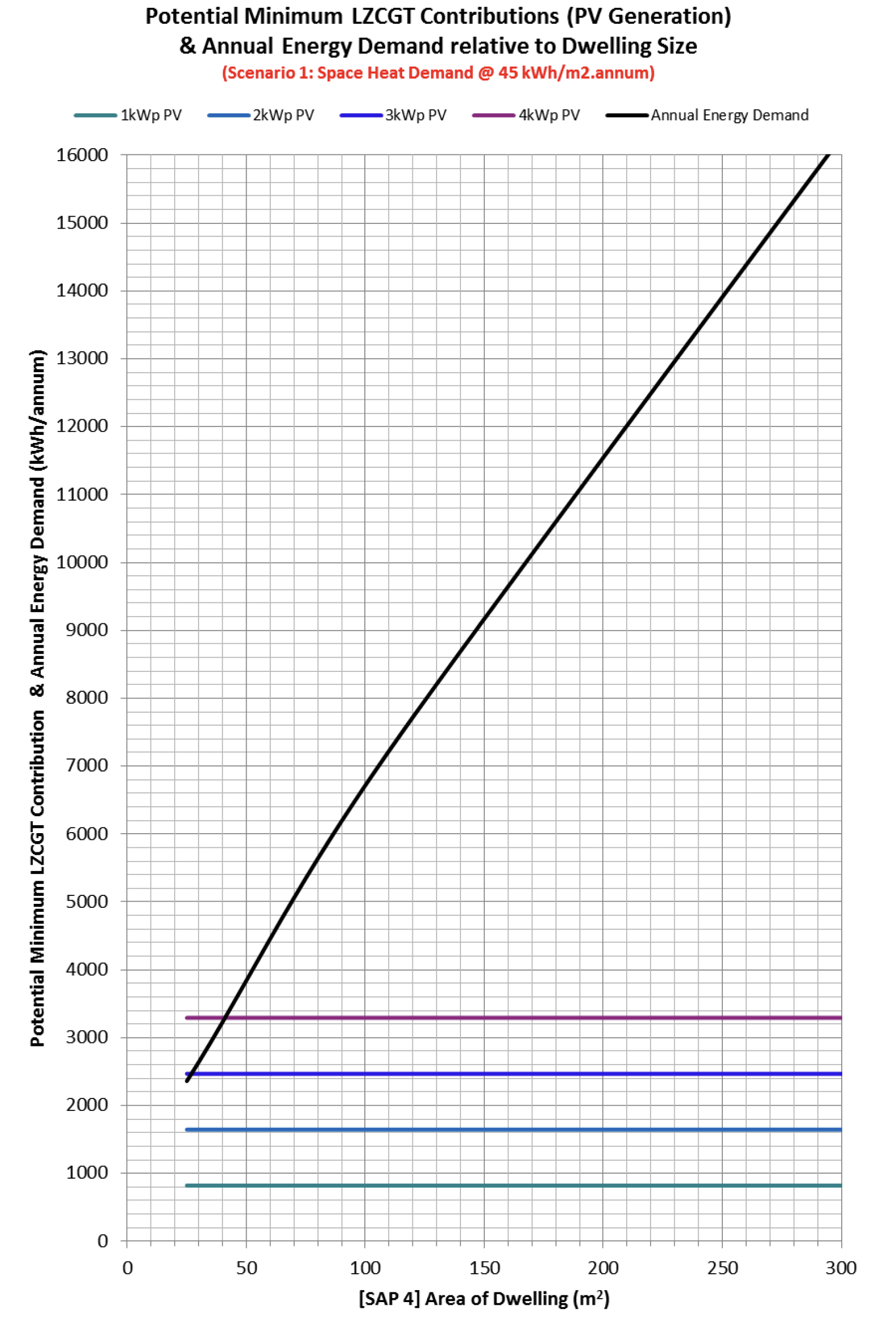
Scenario 1: Past (2012)
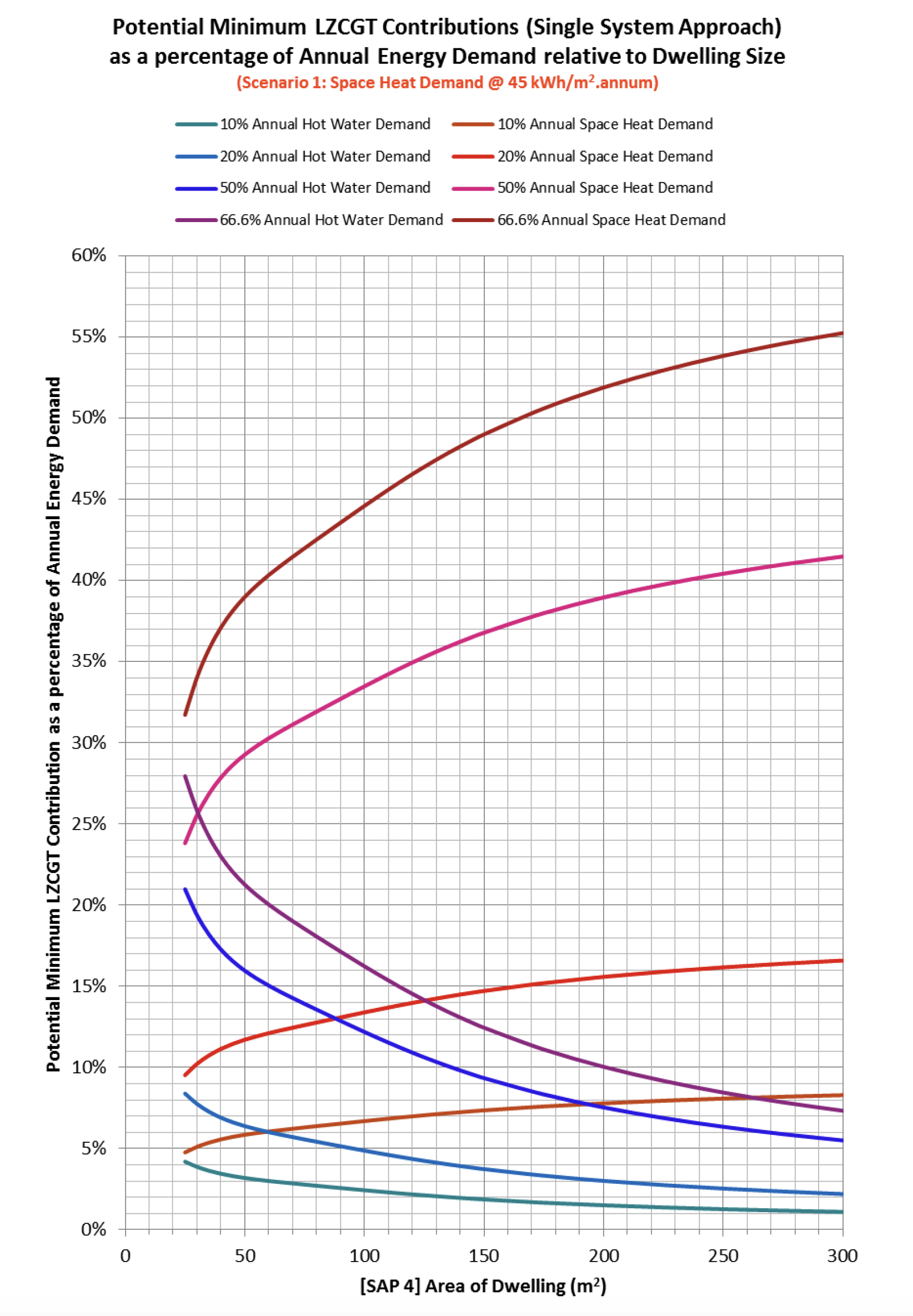
Scenario 1: Past (2012)
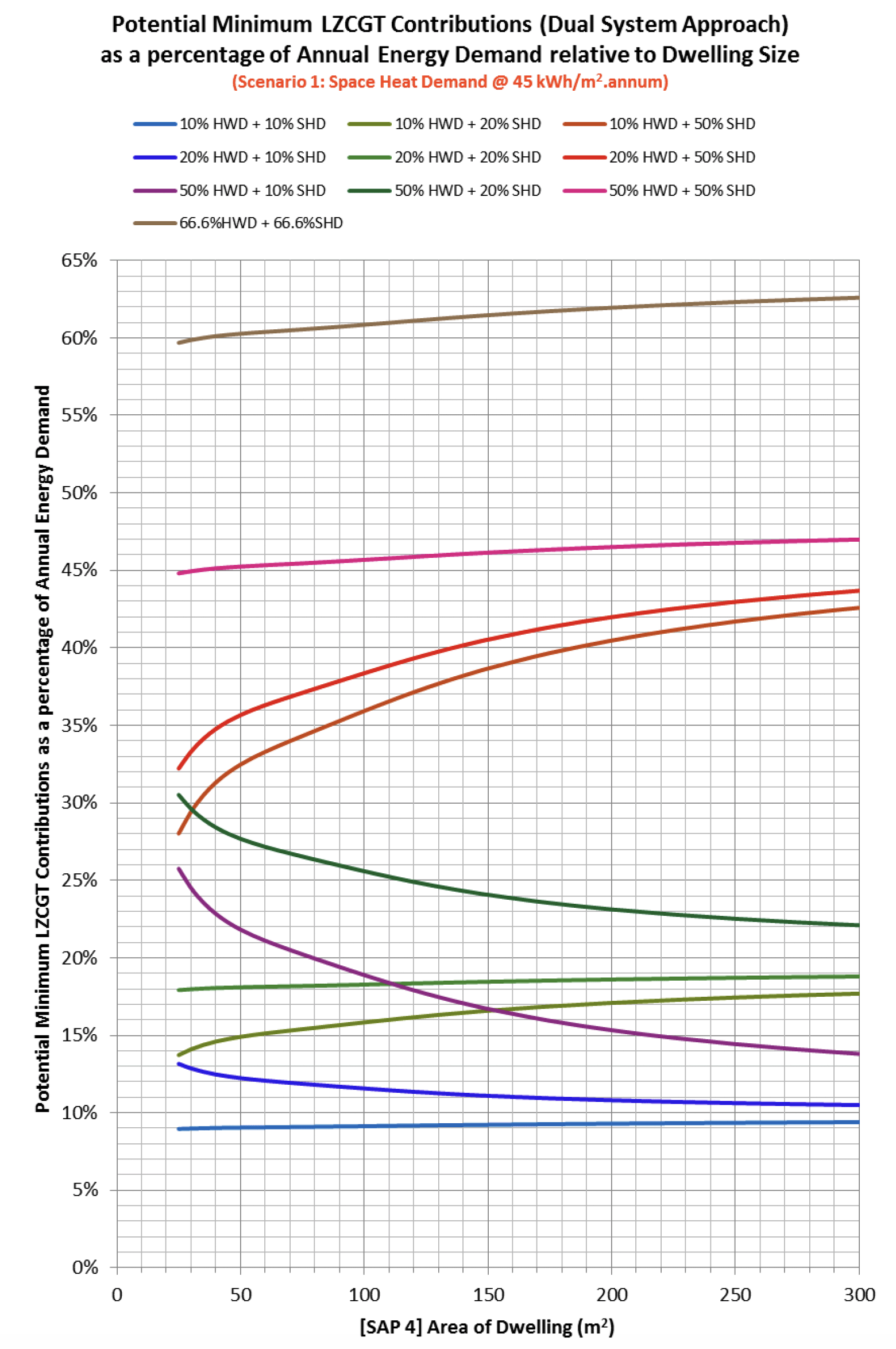
Scenario 1: Past (2012)
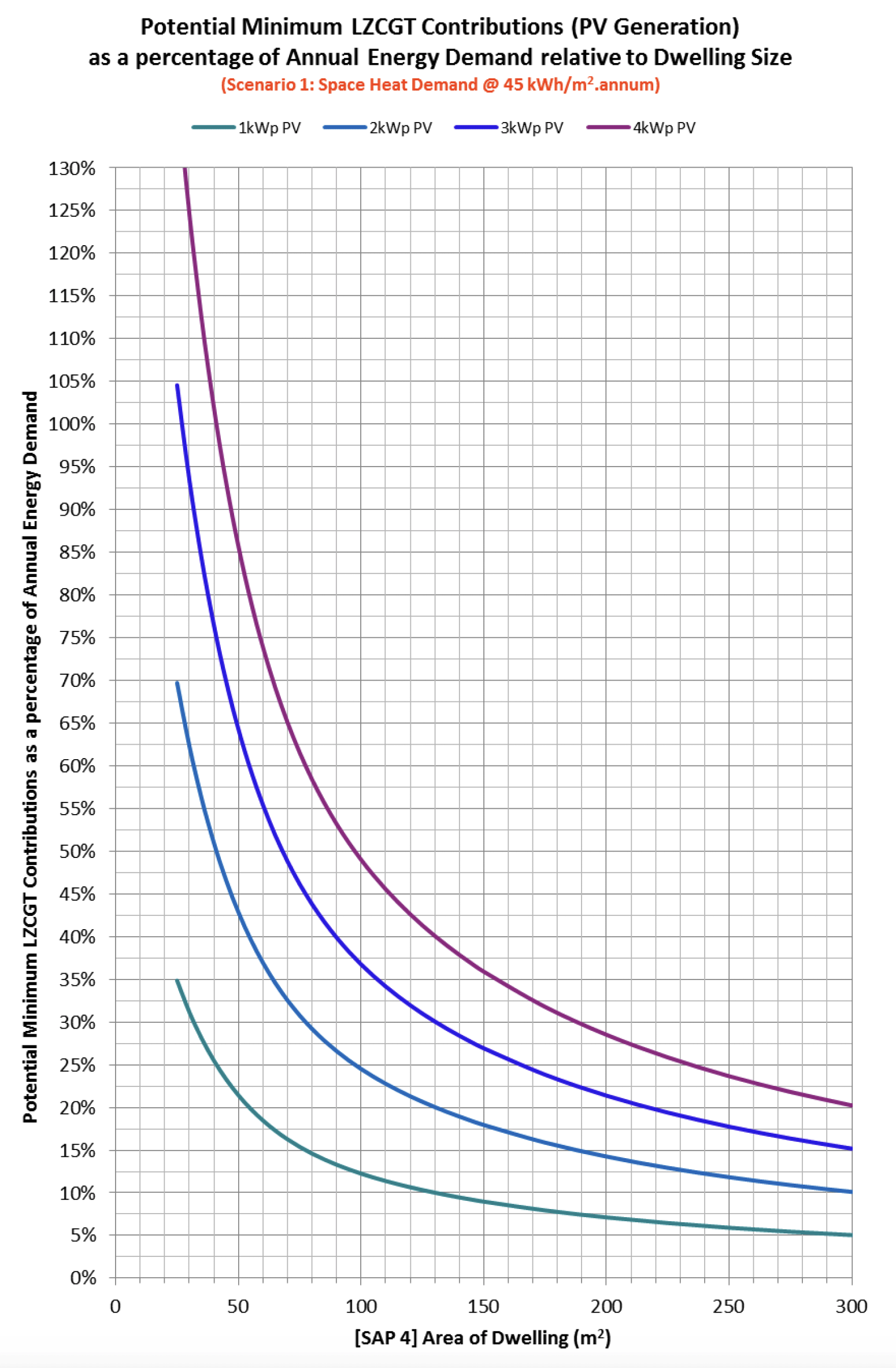
Scenario 1: Past (2012)
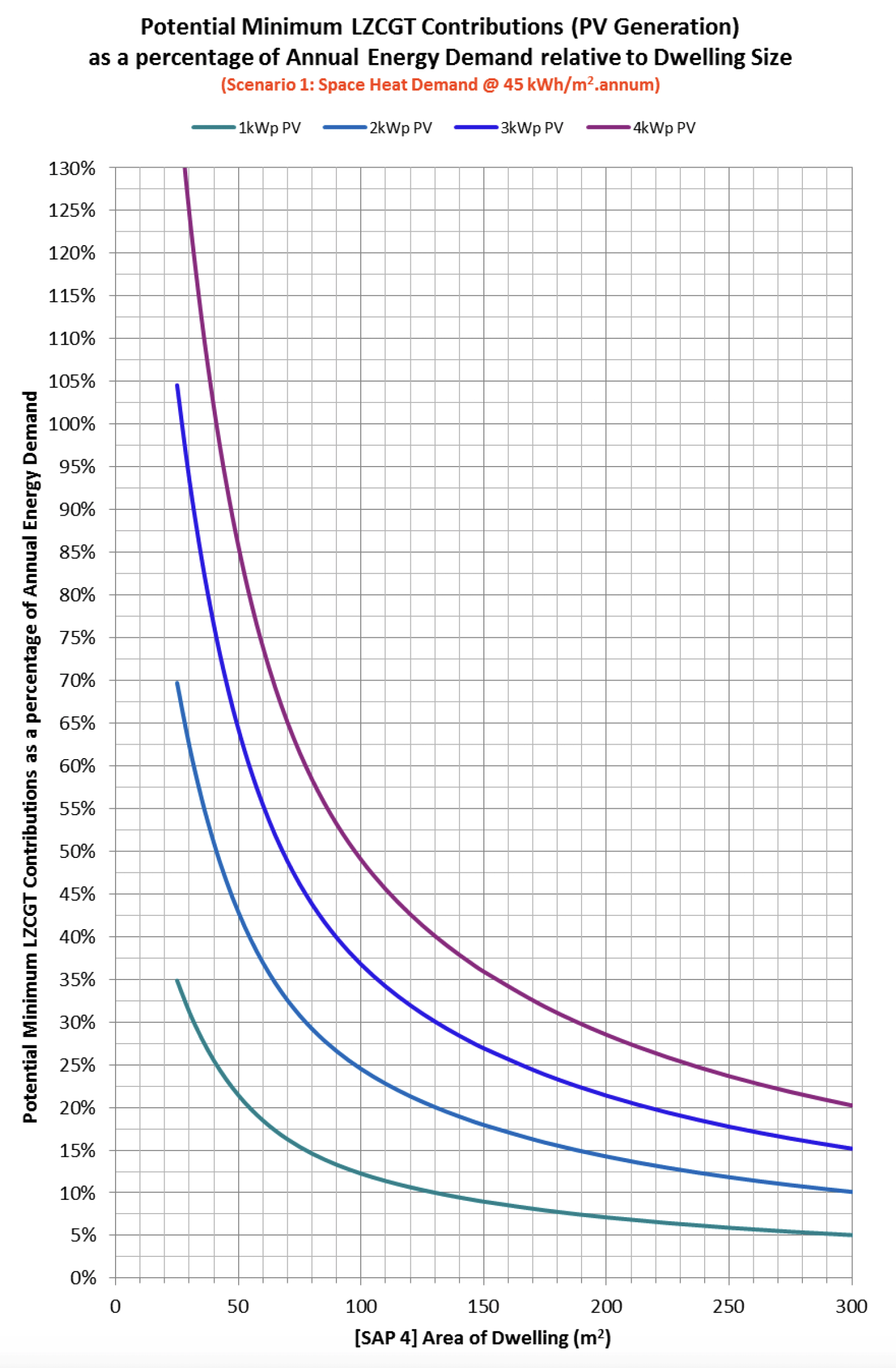
Scenario 1: Past (Space Heat Demand = 45 kWh/m2.annum)
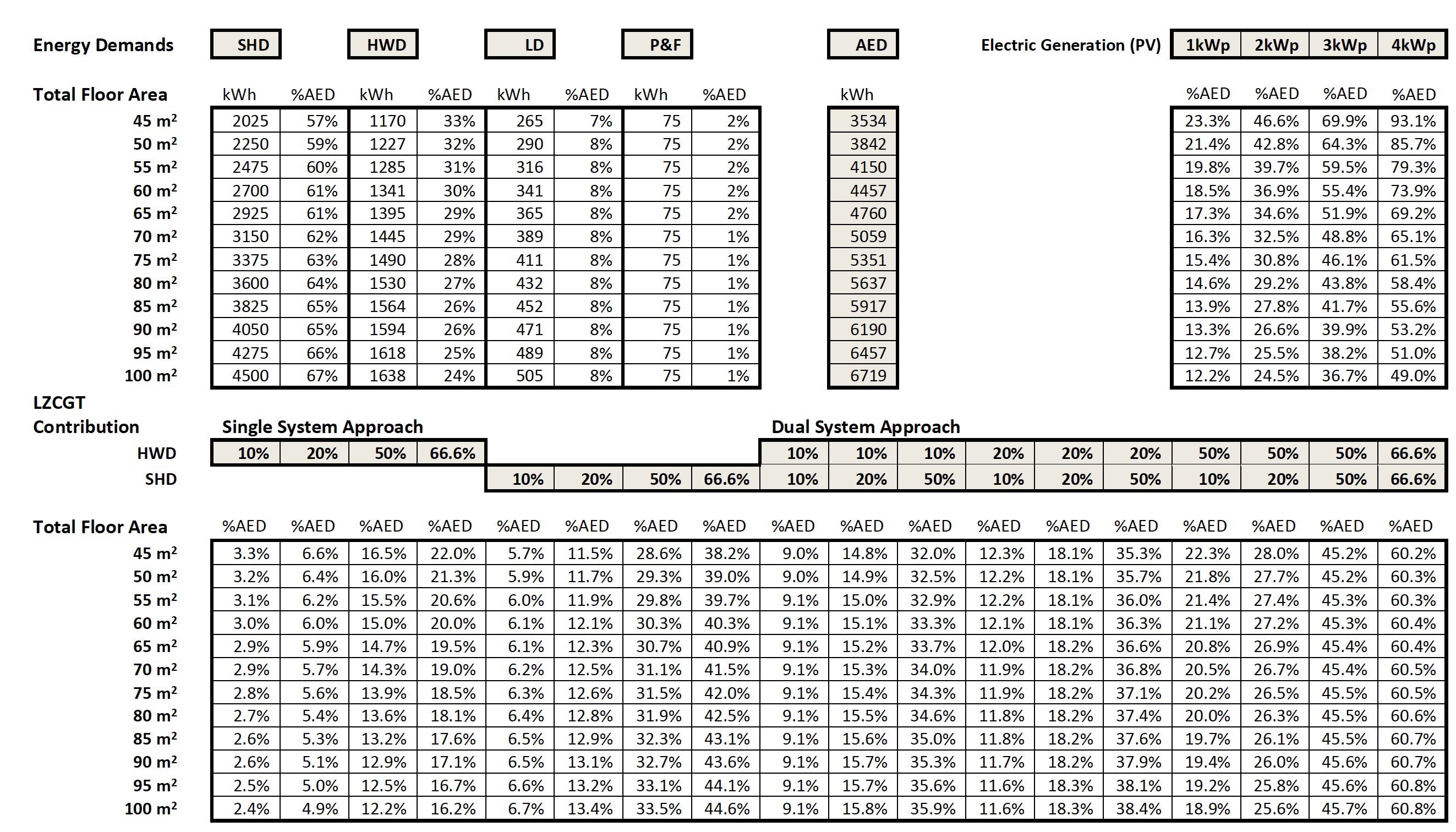
Scenario 2: Present/Near Future (2020-2021)
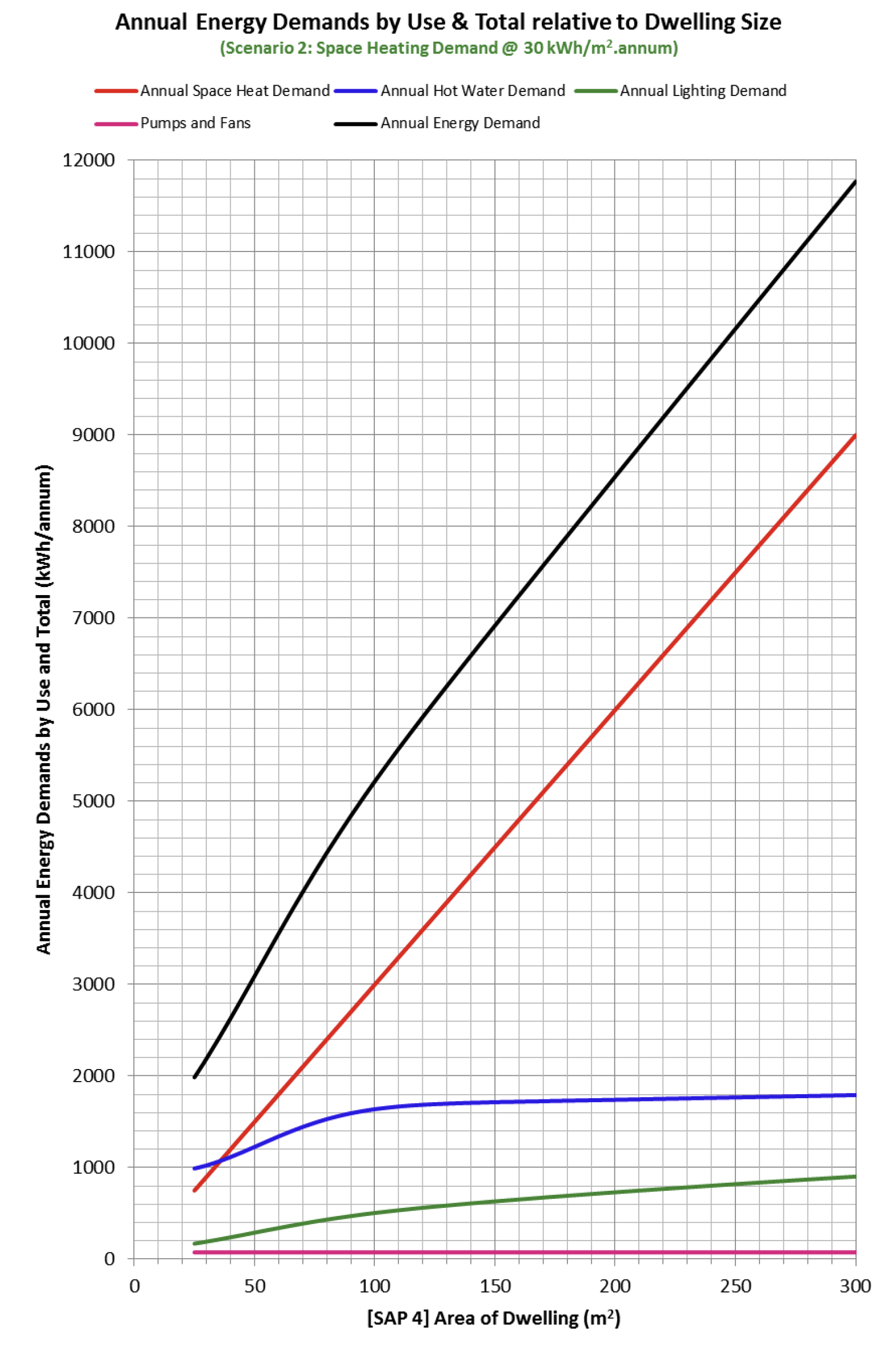
Scenario 2: Present/Near Future (2020-2021)
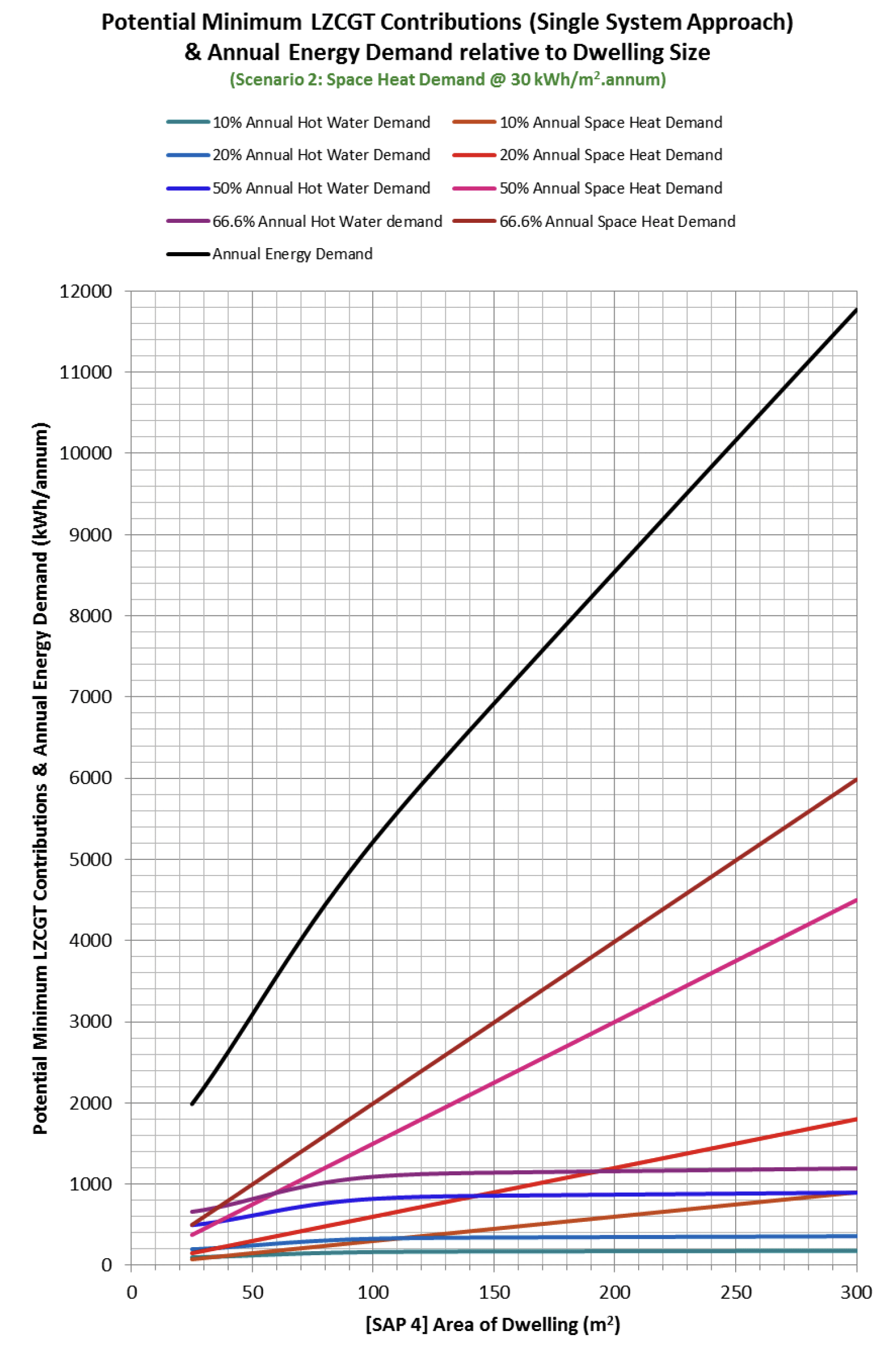
Scenario 2: Present/Near Future (2020-2021)
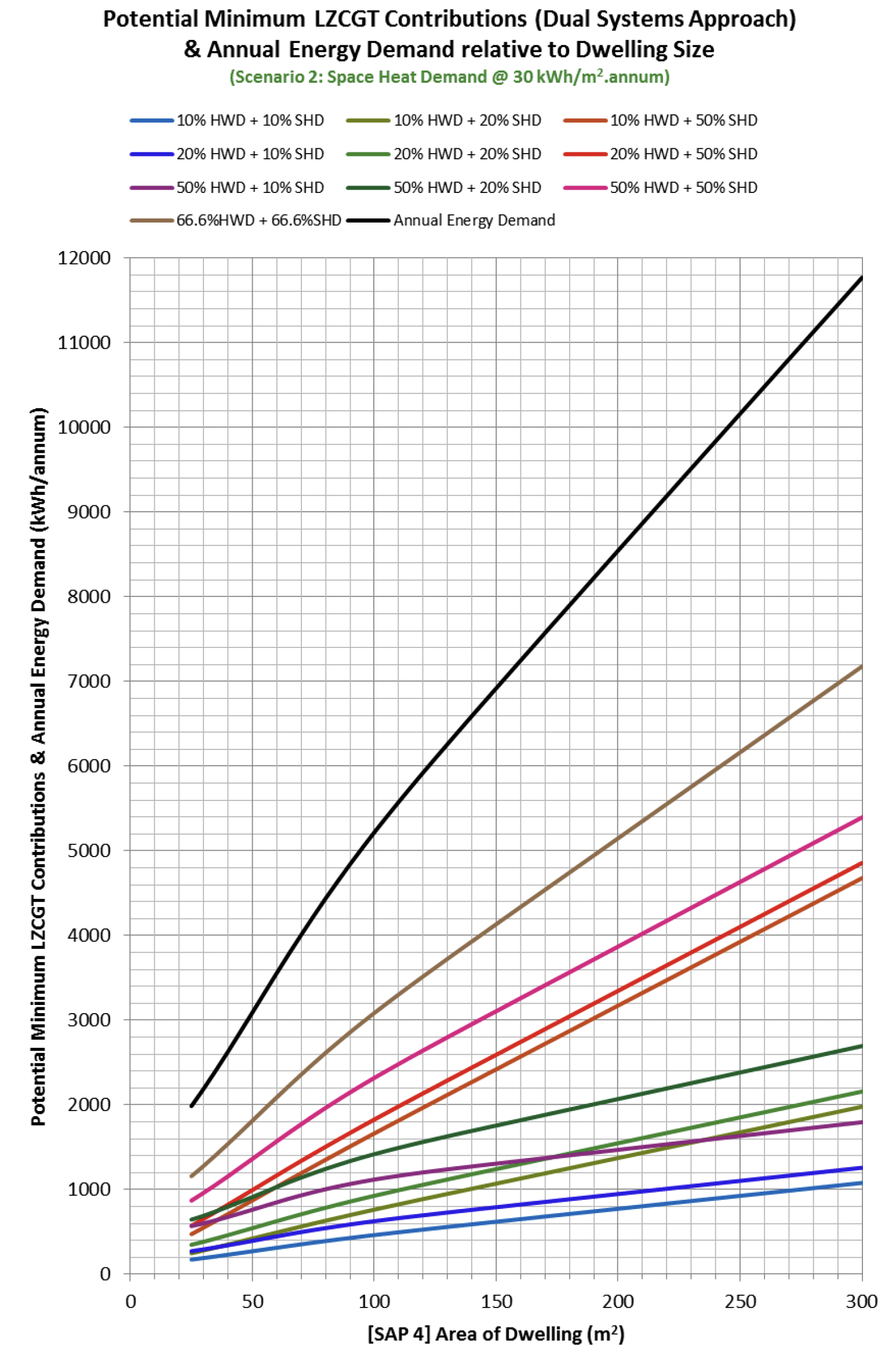
Scenario 2: Present/Near Future (2020-2021)
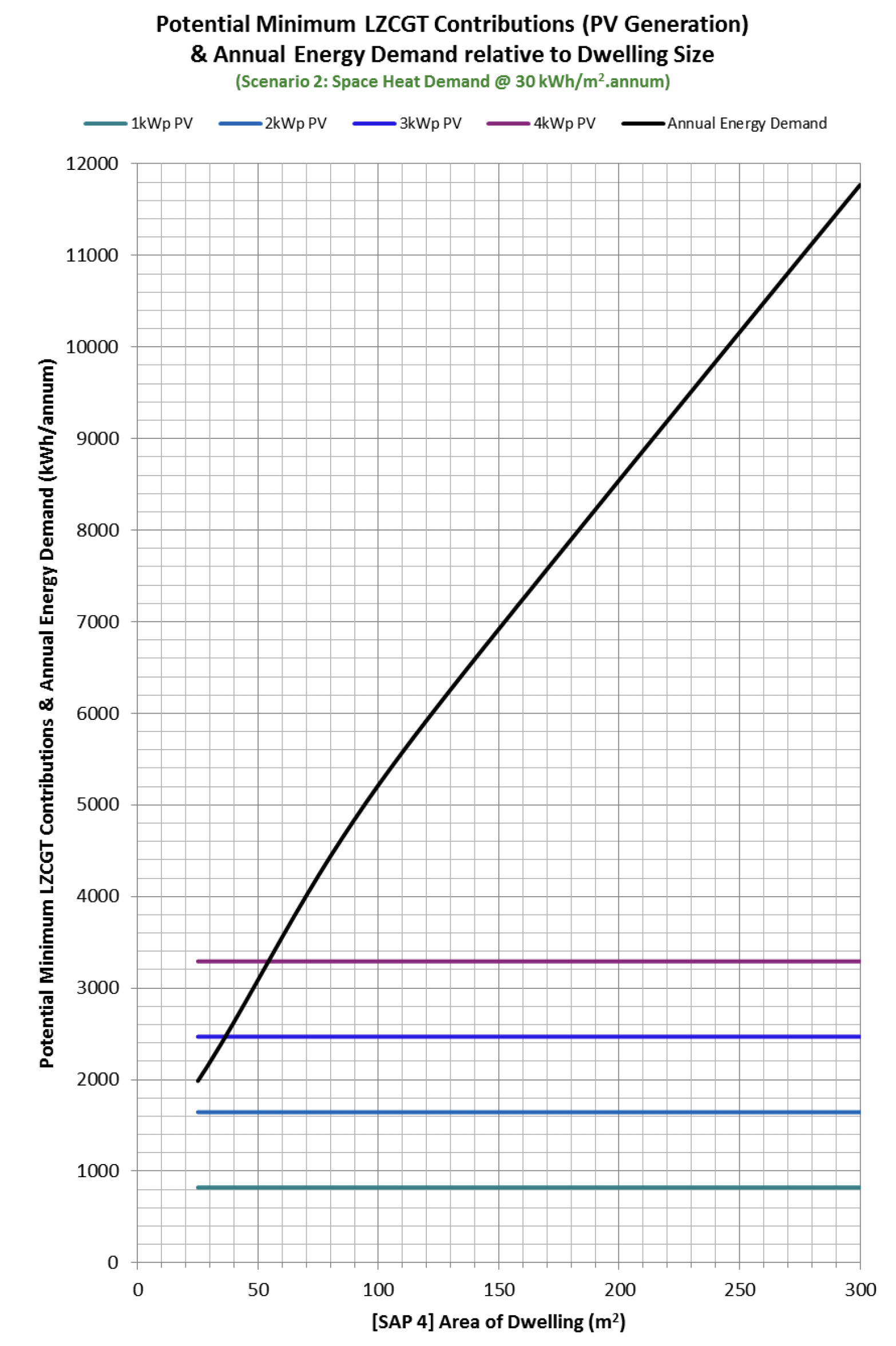
Scenario 2: Present/Near Future (2020-2021)
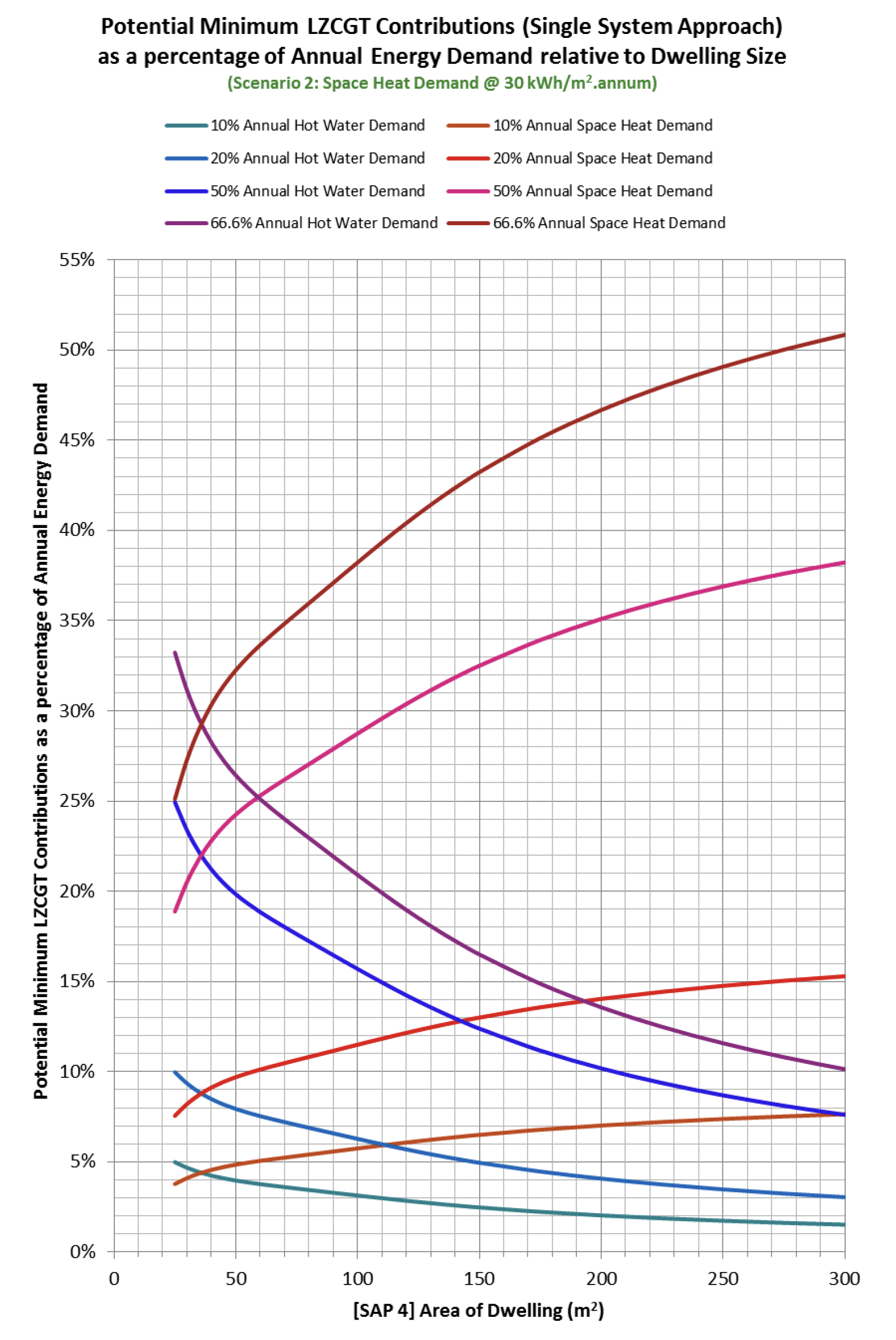
Scenario 2: Present/Near Future (2020-2021)
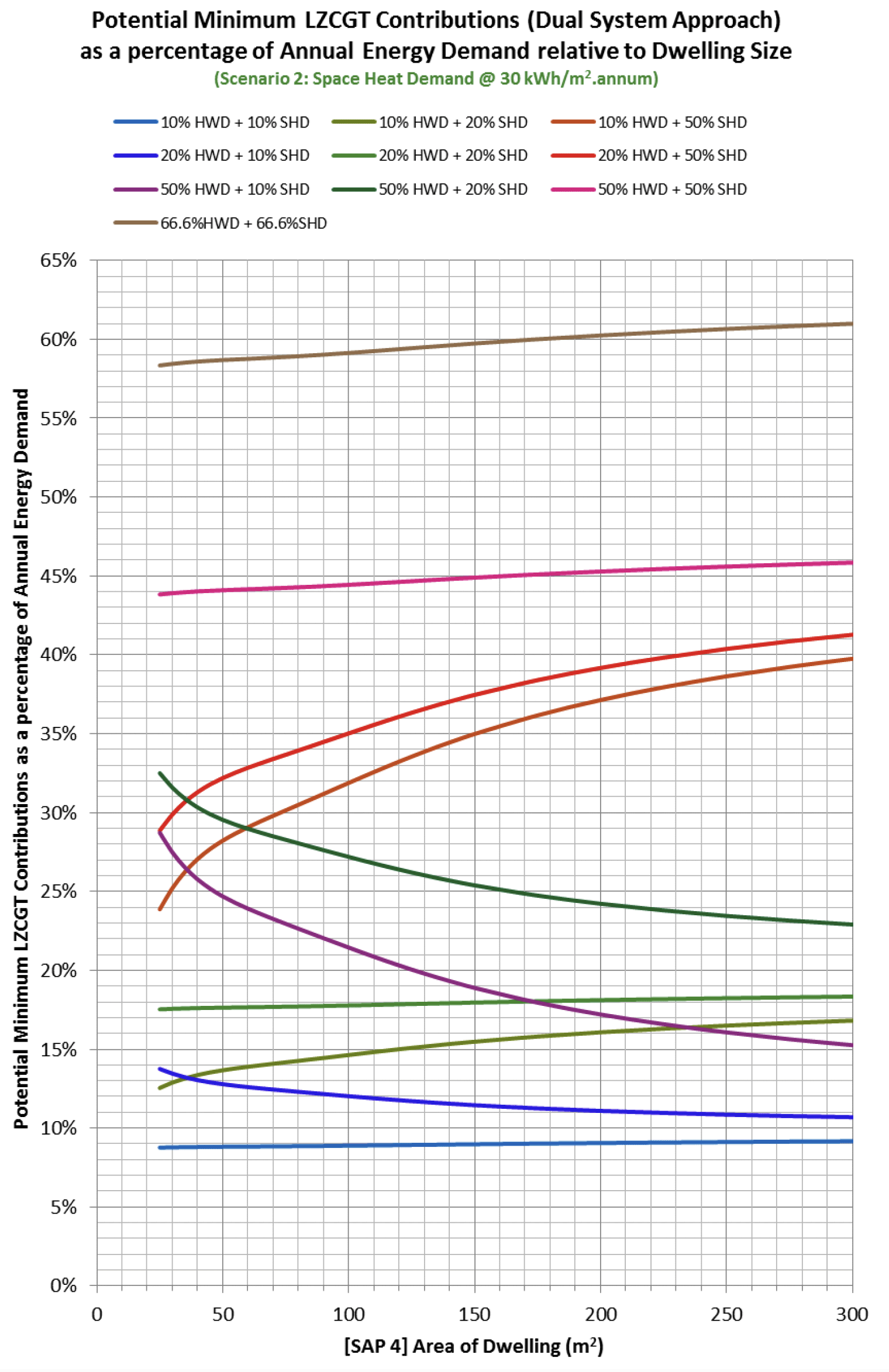
Scenario 2: Present/Near Future (2020-2021)
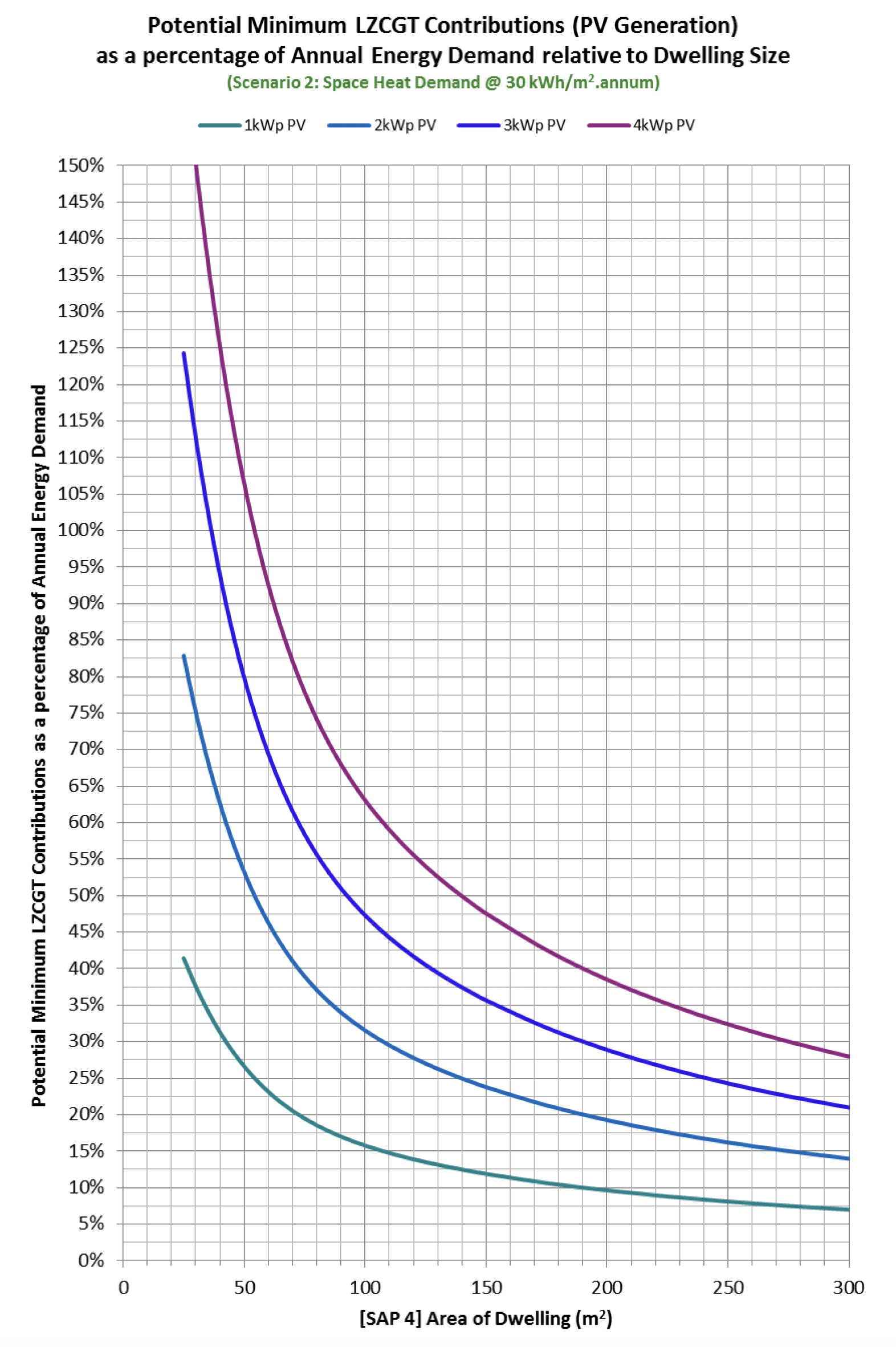
Scenario 2: Present/Near Future (2020-2021)
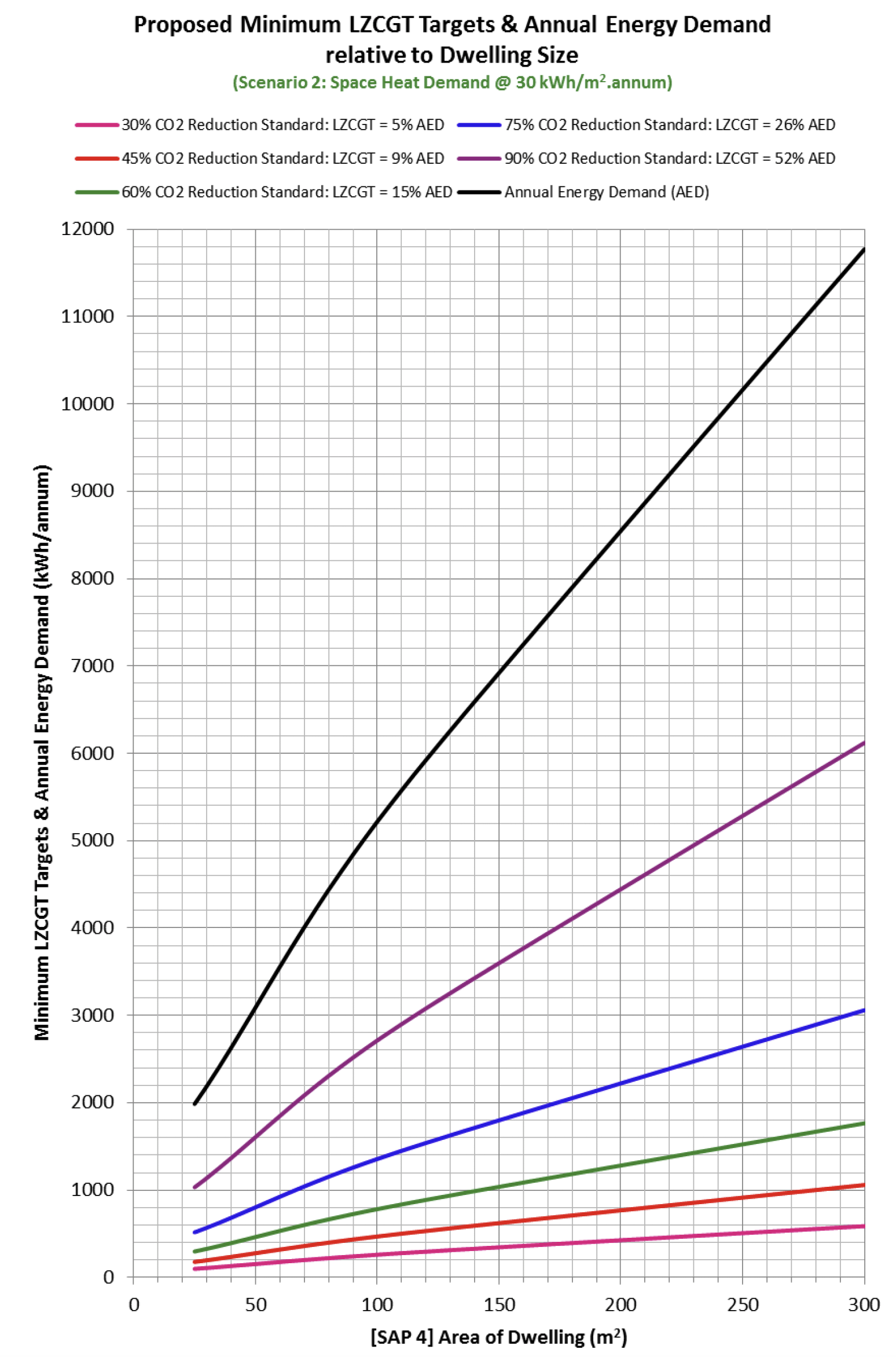
Scenario 2: Present/Near Future (SHD = 30kWh/m2.annum)
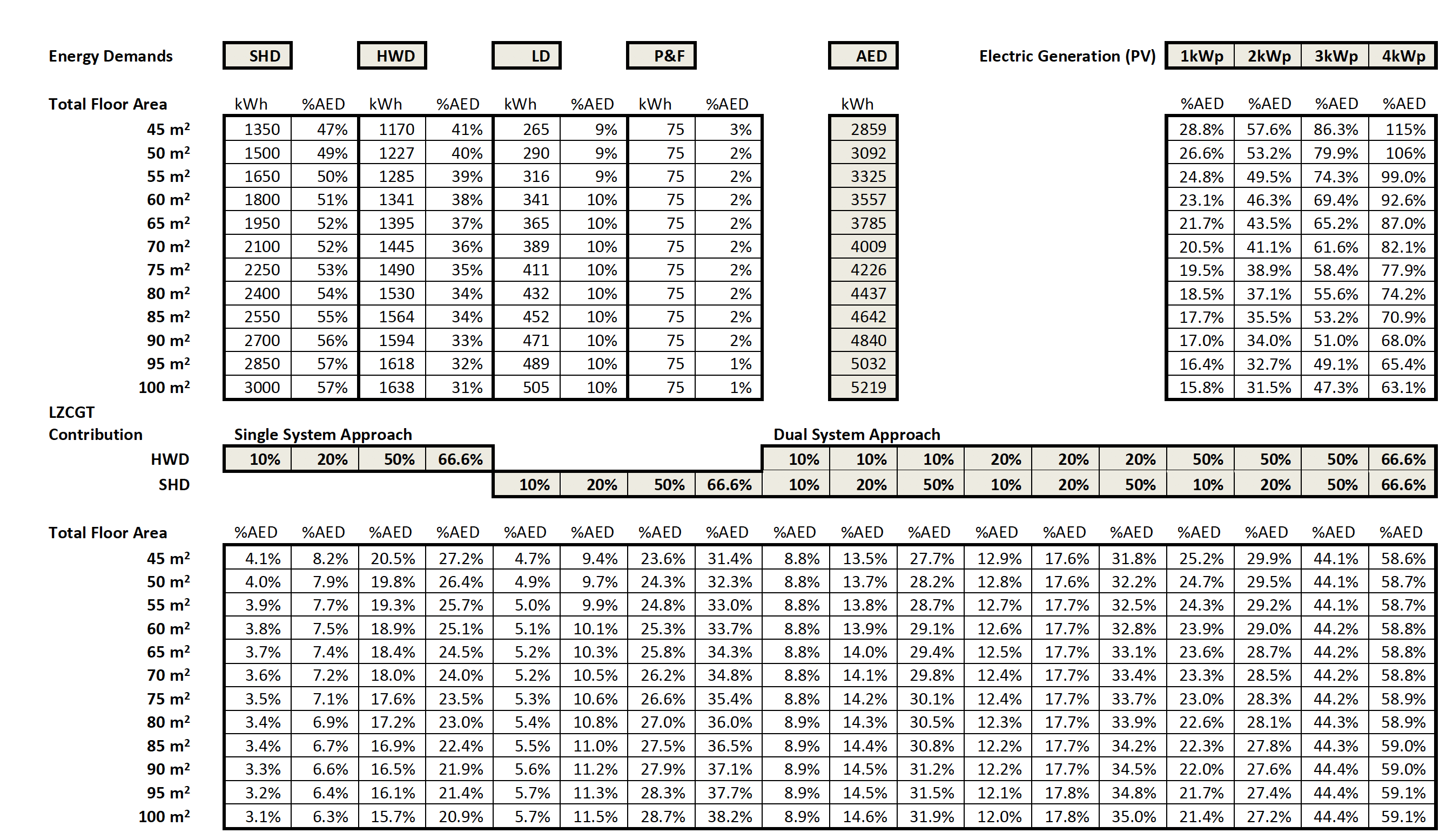
Scenario 3: Future (2024-2050)
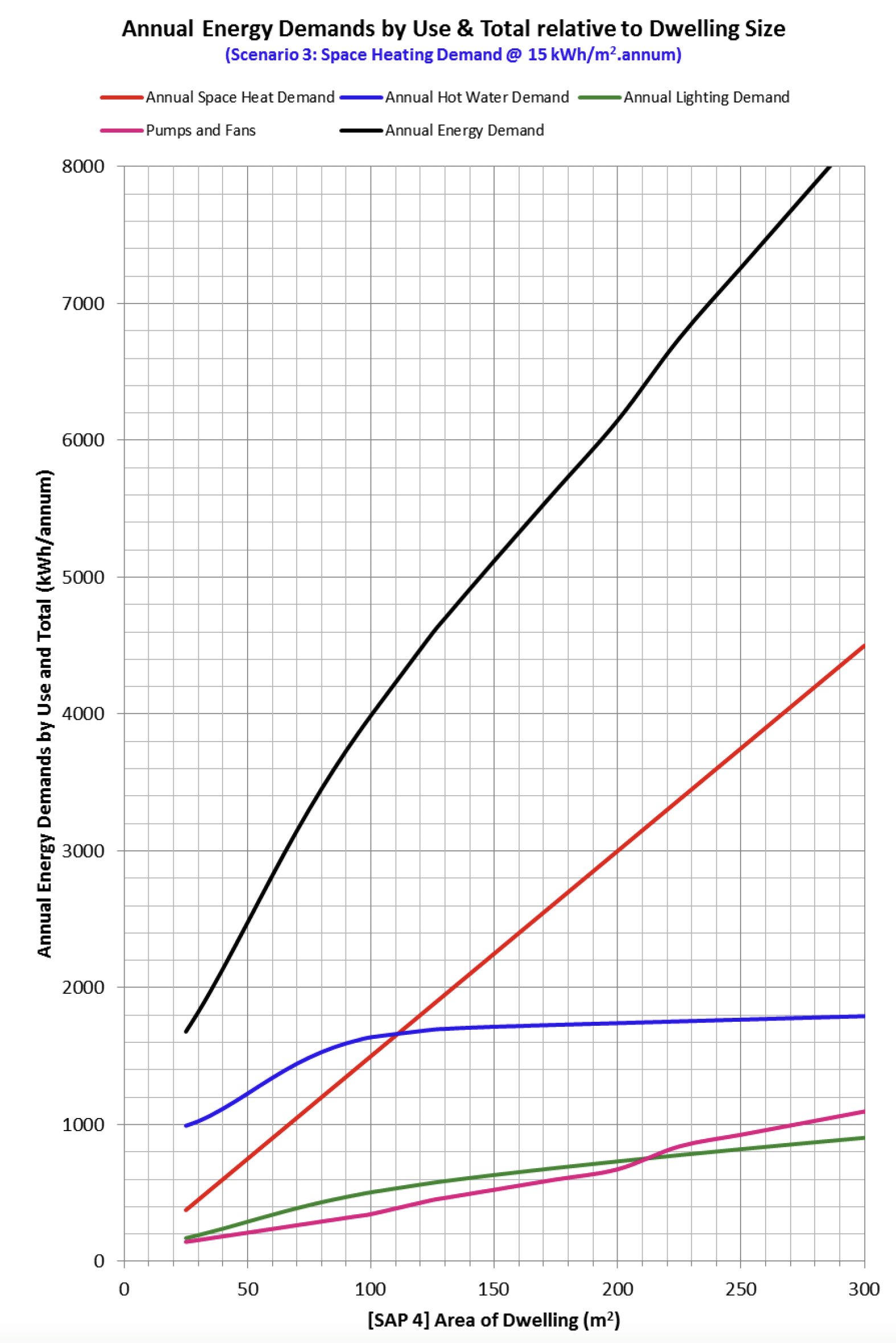
Scenario 3: Future (2024-2050)
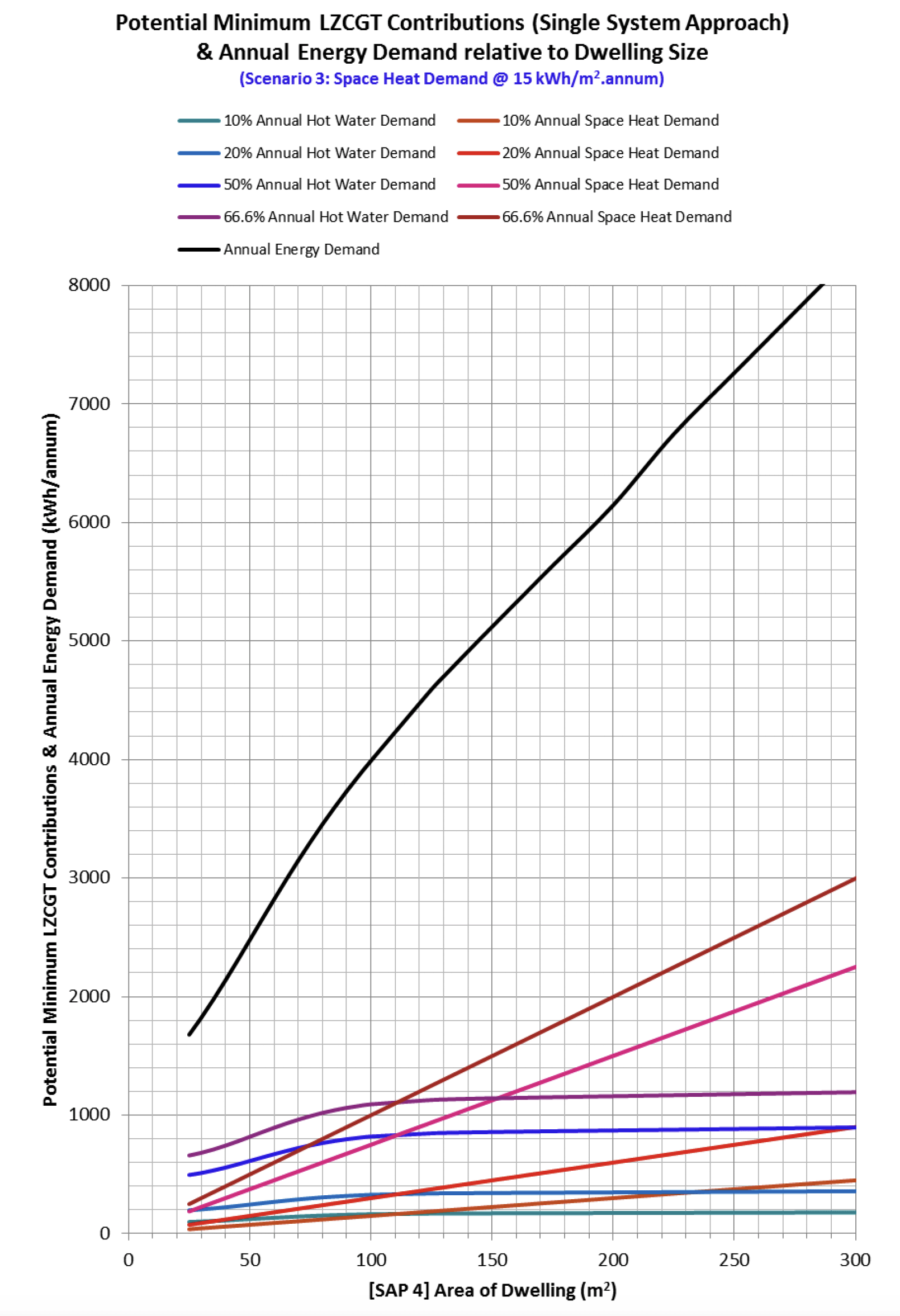
Scenario 3: Future (2024-2050)
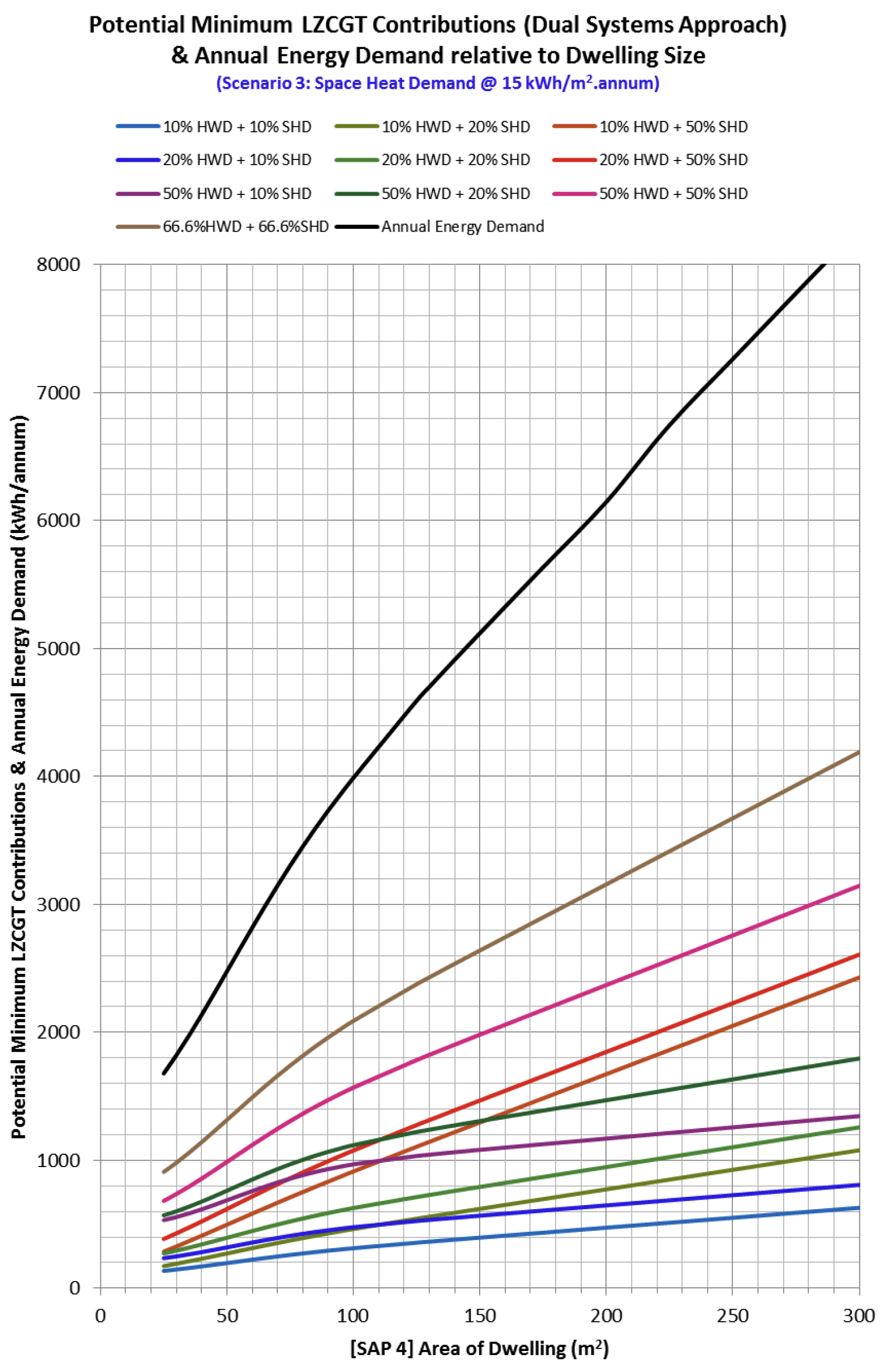
Scenario 3: Future (2024-2050)
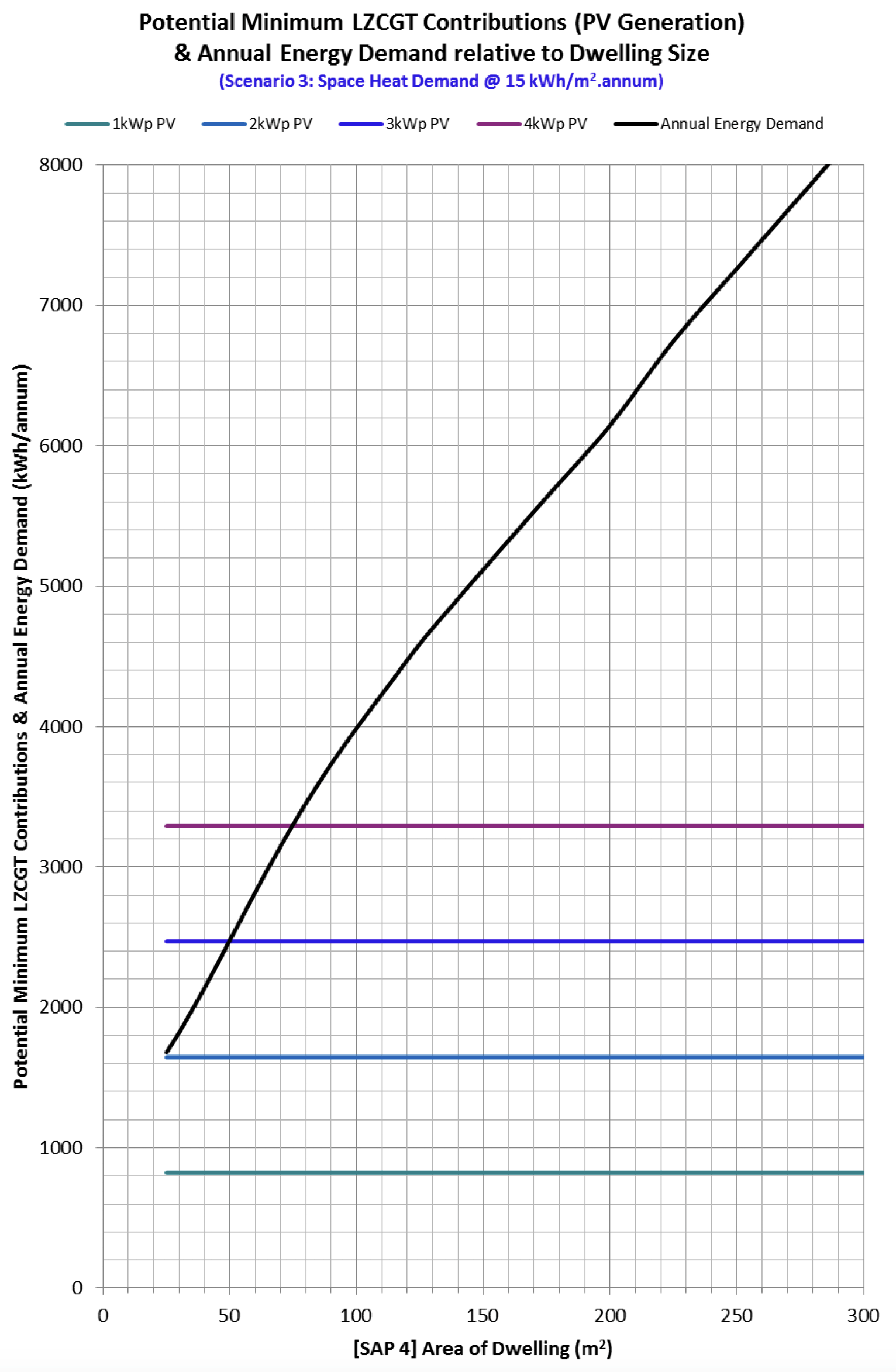
Scenario 3: Future (2024-2050)
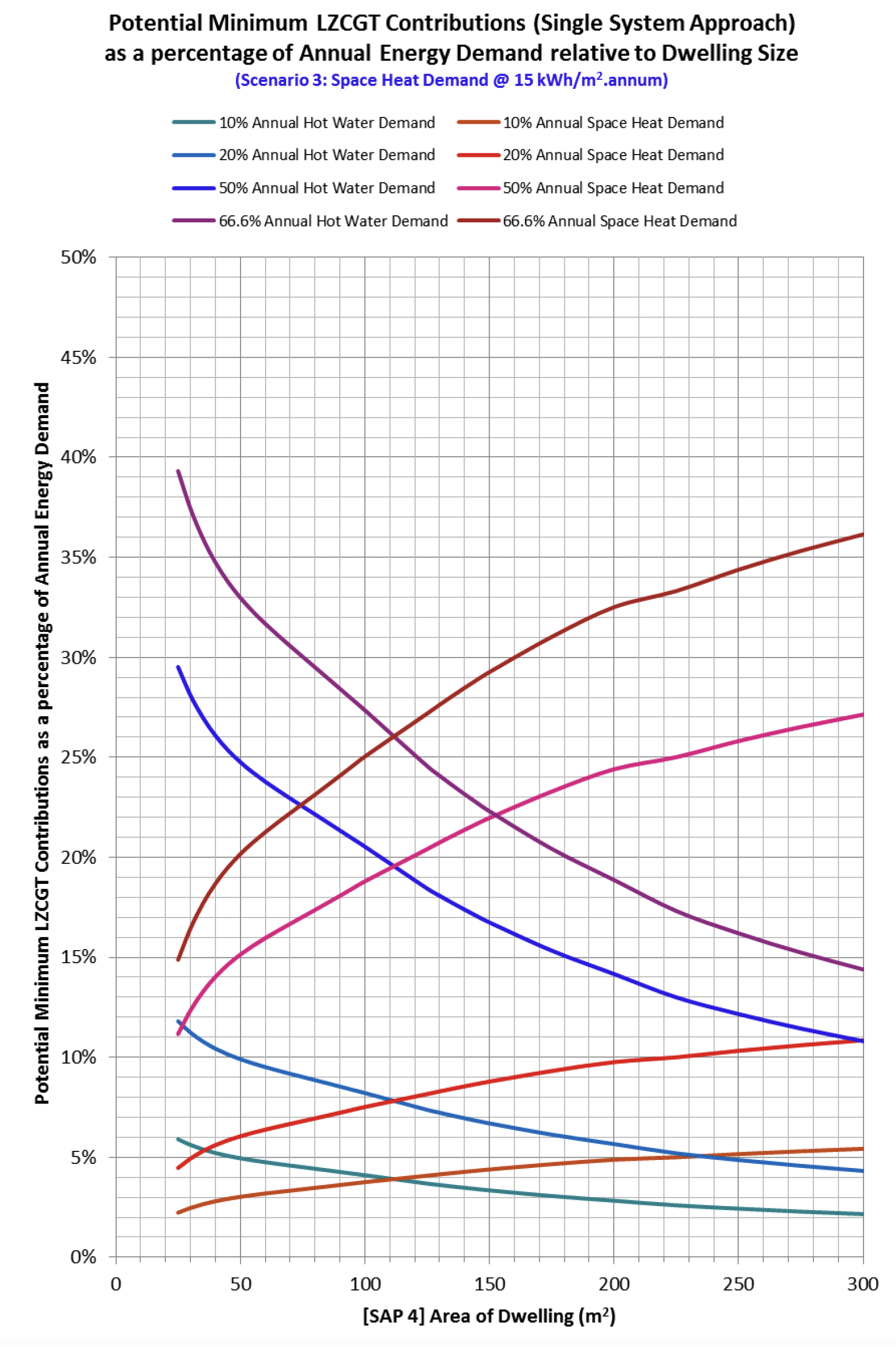
Scenario 3: Future (2024-2050)
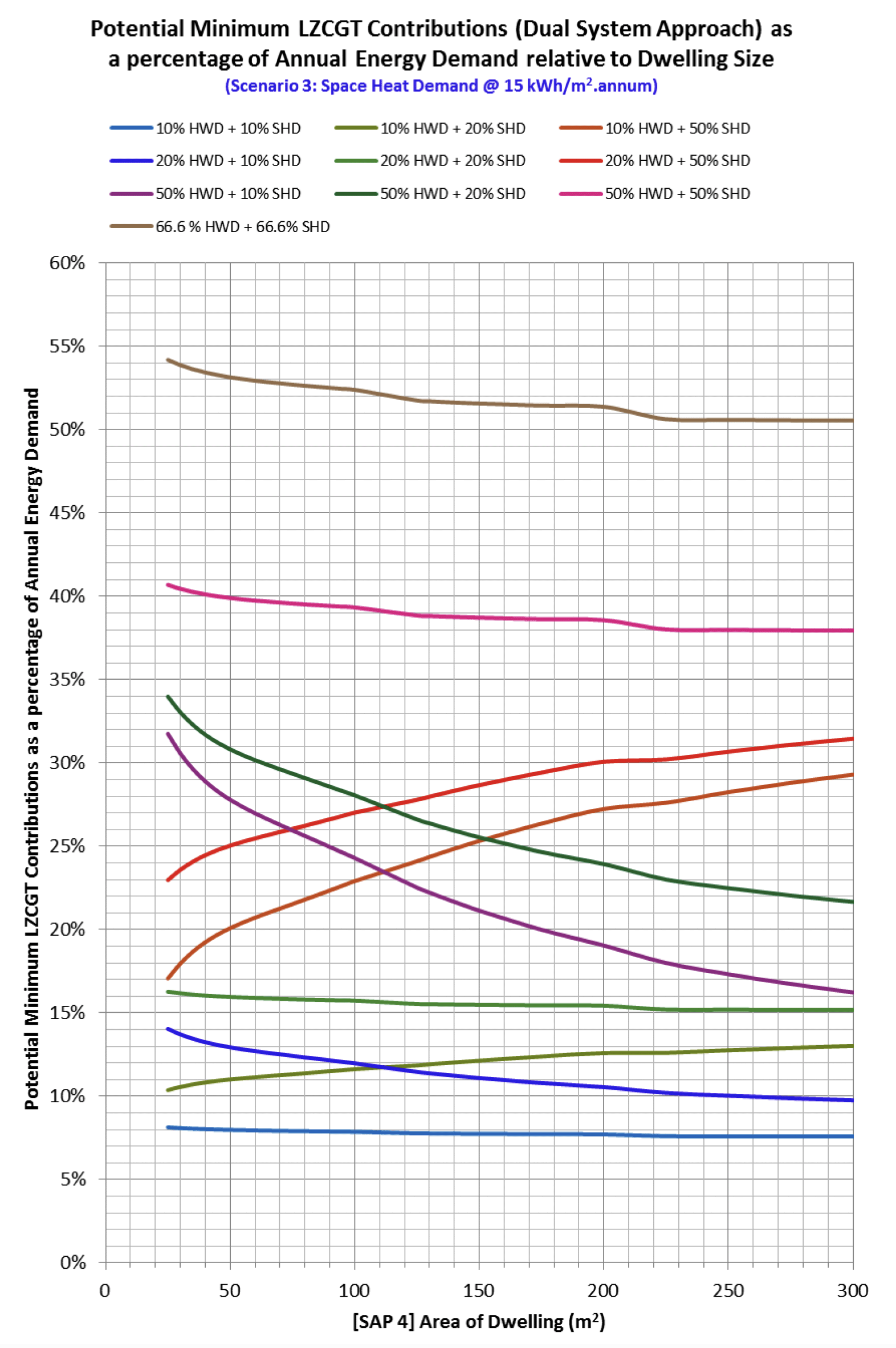
Scenario 3: Future (2024-2050)
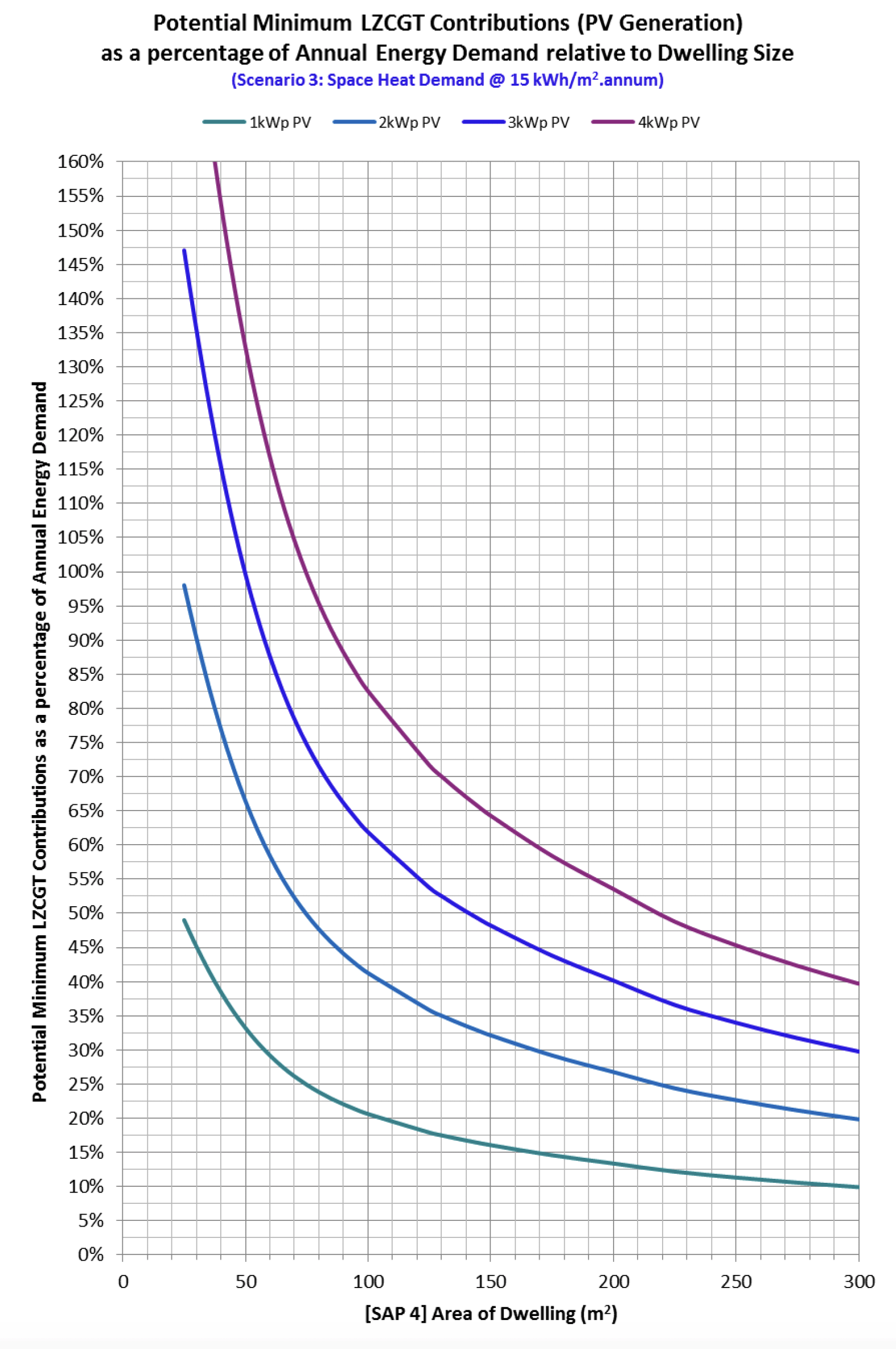
Scenario 3: Future (2024-2050)
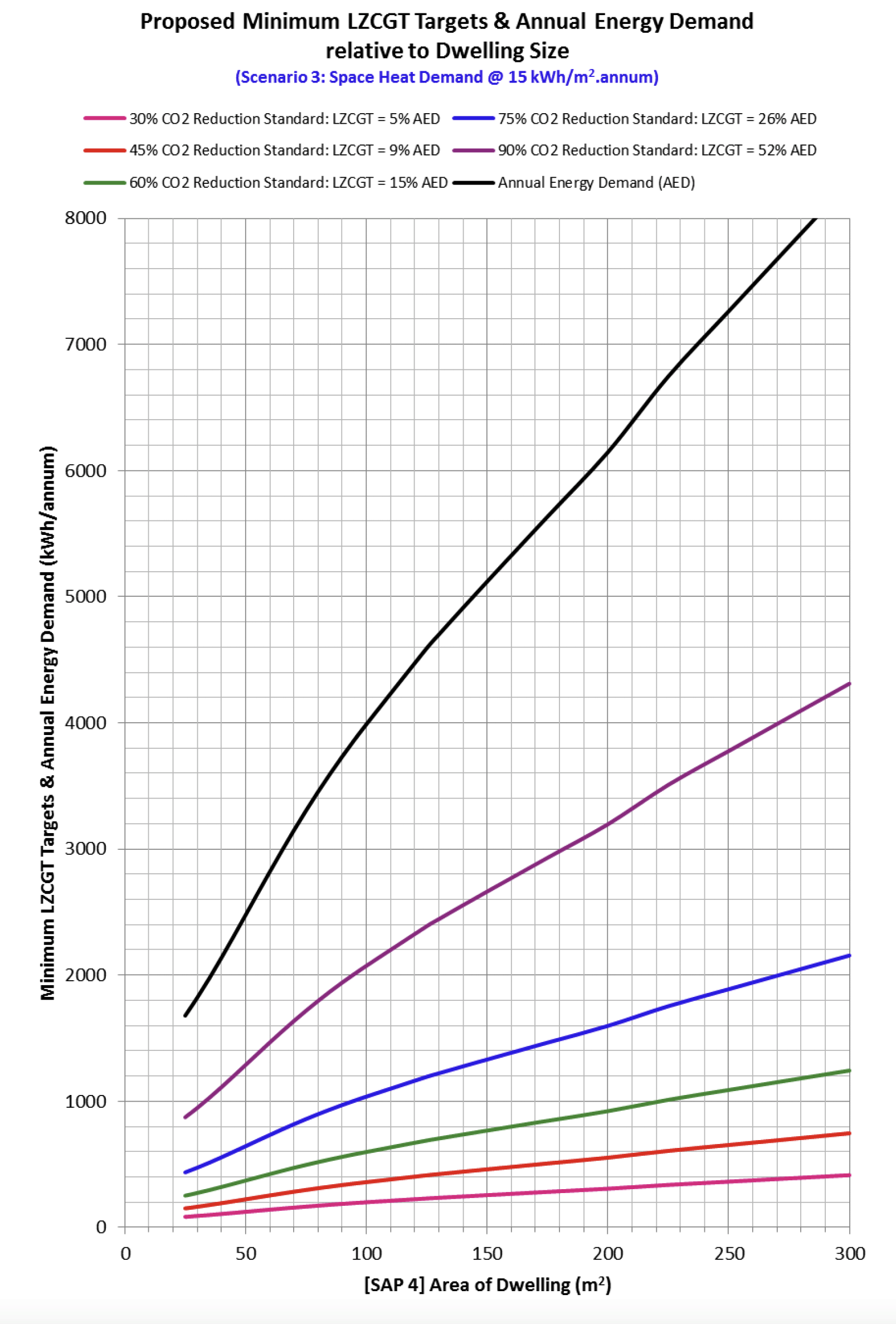
Scenario 3: Future (SHD = 15kWh/m2.annum)
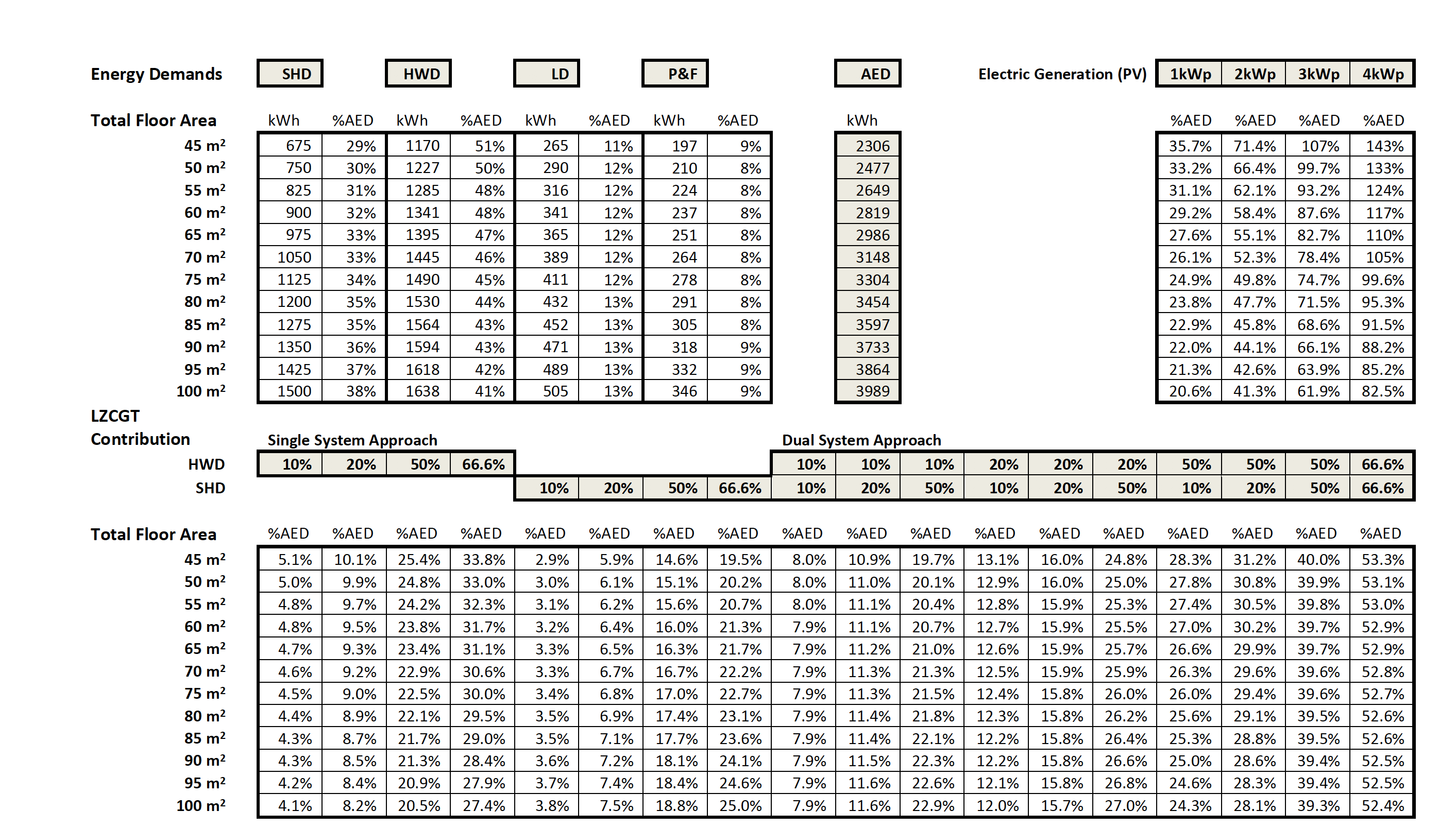
Contact
Email: chief.planner@gov.scot
There is a problem
Thanks for your feedback